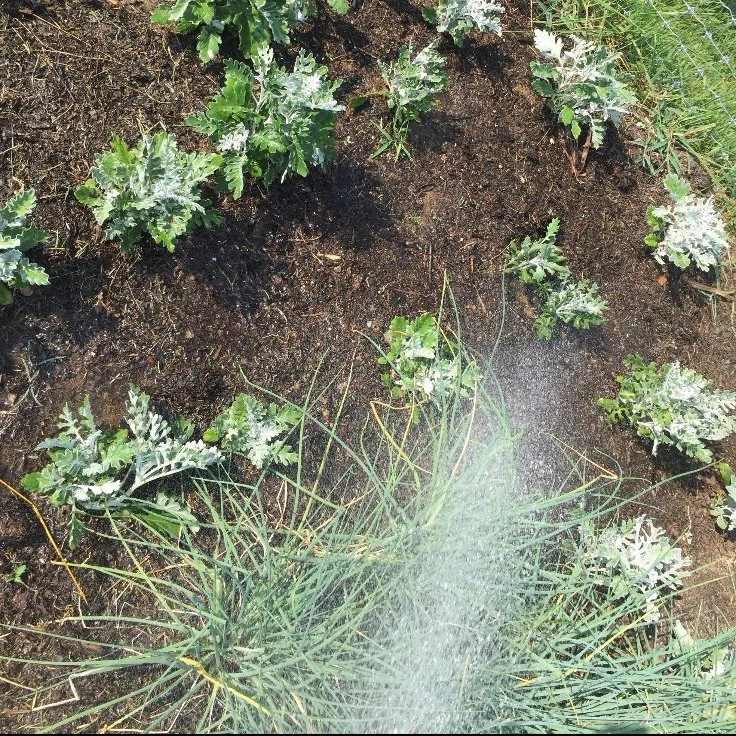Burkett in Bloom
Hello, my name is Natalie Huntley, and I am a student from NC State working part-time at Burkett Farm (following a summer internship there). It is my pleasure to be your guest blogger for this post. The focus of Burkett Farm has been produce oriented for the past few years. The mission, after all, is to give back to the community and help fight hunger. With honeybees and other pollinators buzzing about the farm, Farmer Jamie has always incorporated flower rows amongst the produce to encourage beneficial insects to pollinate the fruits and vegetables. When I started my internship at Burkett back in May, I began maintaining the existing rows of flowers and planting a few more of my own. Since I have experience growing and designing with flowers, it became my project to harvest, deadhead, seed, and transplant flowers. In addition to the flower rows that already existed on the farm, I transplanted seedlings that I had started ahead of time in the beds near the gate on the farm. I have been weeding and manually watering this area since it is away from the rest of the crops and not on irrigation.
When I started at Burkett Farms in May, I was told that a florist Cydney English, owner of The English Garden in Raleigh, was interested in buying flowers from the farm. While rows of flowers existed already, it became a new task to maintain the flowers by deadheading, cutting back flowers as needed, and seeding new transplants. Cydney’s goal with buying flowers from Burkett is to incorporate local blooms into her designs. Proceeds from the flower sales are donated to Passage Home, a local organization that aims to end the cycle of poverty by helping families with affordable housing, addiction recovery, and job placement.
Flowers are cut the day that they are delivered to ensure the best quality and freshness. On Fridays, Bland Landscaping employees create bouquets for the home of the owners of Burkett Farm. (Bland Landscaping manages Burkett Farm for the family.) This is also a welcomed opportunity for me to practice bouquet making with what I have available. The flowers have also been used for tabletop arrangements for events on the property.
A month into summer the temperatures were reaching into the upper 90s and 100. The focus for these hot months of the year are just to keep the plants well-watered and weed free. Most of the flowers on the farm are on an irrigation timer because they are intermixed with the rows of produce. However, there are four beds that are not. This means that those four beds need to be watered in the morning and checked throughout the day in case they need additional watering.
The other flowers that need to be watered manually are the seedlings in the hoop house. Since the inside hoop house can get much hotter than outside, these seedlings need to be closely monitored. To help with temperature regulation, the seedlings have been placed under the tables in the hoop house, but are elevated by crates so that they are not just sitting on the ground where slugs and mice can enjoy them.
While the flowers have taken up a key role at Burkett Farms, with proceeds of the flower sales going to Passage Home, it is still very important that the flowers are grown symbiotically with the honeybees and produce. This means avoiding large amounts of hybridized flowers. Hybrid varieties of flowers are not necessarily harmful to honeybees, but they sometimes are not beneficial either.
Hybrids are bred in such a way that they sometimes produce none or very little nectar or pollen, so they would be useless in a garden intended to provide honeybees with food. Another reason to choose open-pollinated flowers above hybrids is that the seed from the flower may be sterile or will not reproduce true to the parent plant. Here on the farm, we like to collect flower seeds when possible to either replant for upcoming seasons or trade with other farmers. (It should be noted that not necessarily all of the flowers get deadheaded; I always leave some for the pollinators to snack on.)
With last week’s frost, our summer/fall flowers have since turned to compost fodder, but we are already planning and planting for our winter and spring flowers – more to come on that later!








